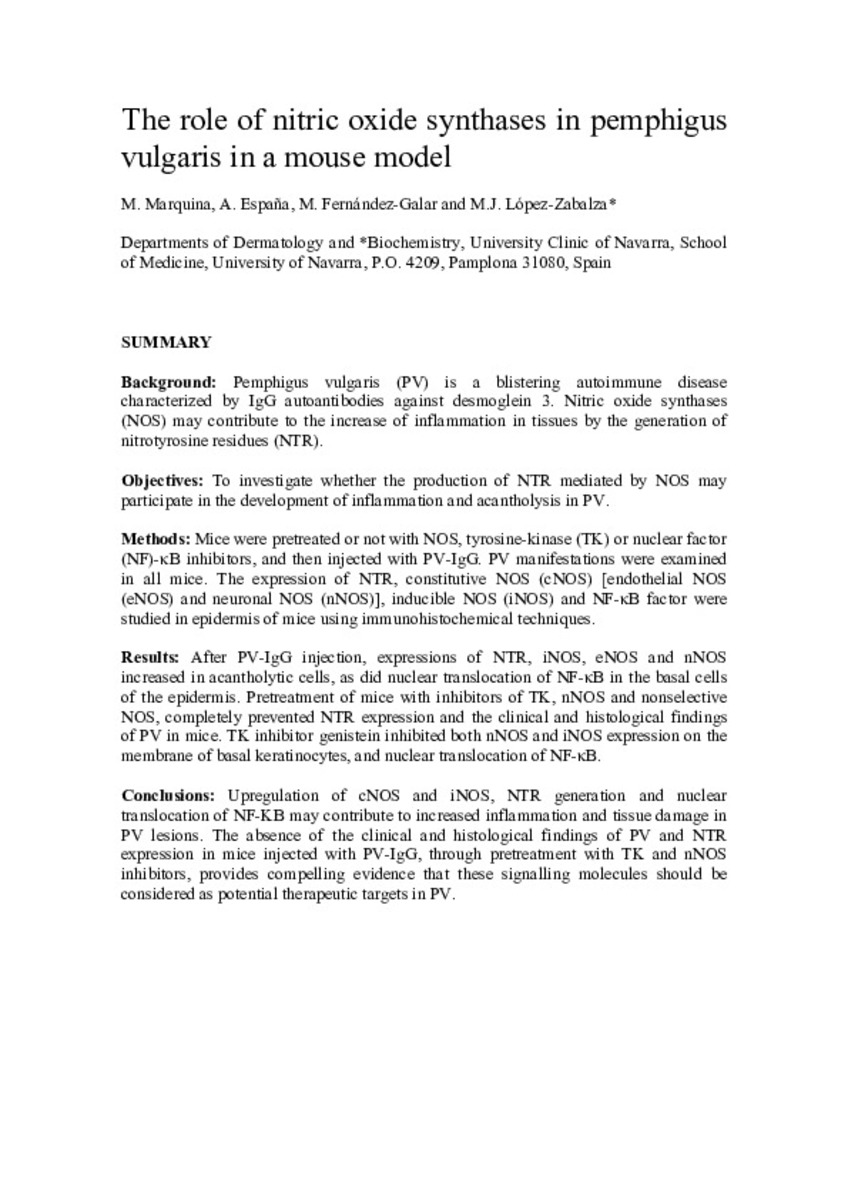The role of nitric oxide synthases in pemphigus vulgaris in a mouse model
Palabras clave :
Nitric Oxide Synthase Type I/metabolism
Pemphigus/enzymology
Immunoglobulin G/metabolism
Fecha de publicación :
2008
Editorial :
Wiley-Blackwell
Cita:
Marquina M, España A, Fernández-Galar M, López-Zabalza MJ. The role of nitric oxide synthases in pemphigus vulgaris in a mouse model. Br J Dermatol. 2008 Jul;159(1):68-76.
Aparece en las colecciones:
Estadísticas e impacto
0 citas en

0 citas en

Los ítems de Dadun están protegidos por copyright, con todos los derechos reservados, a menos que se indique lo contrario.







